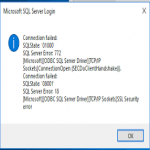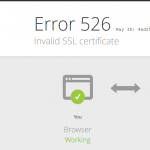fwbackups is a feature-rich user backup tool that allows you to backup your essential documents anytime, anyplace using a simple, powerful interface with support for scheduled backups and remote backups.
Here at Ibmi Media, we shall look into how to install and backup data on Ubuntu using fwbackups.
Main features of fwbackups includes:
- With this interface, creating new backups or restoring documents from a previous backup is simple.
- There are two types of backups: directory copies and tar archives.
- Support for incremental backups (directory copy only)
- Compression is the compression of anything (archive format only)
- Delete any files or directories that you don’t want to see.
- Backup organization and cleanup are done automatically.
- SFTP/SSH is used to send backups to remote hosts.
- Existing backup sets can be restored.
- With incremental backup modes, you can create your backup faster by simply taking the changes from the previous backup.
- Unwanted files are not backed up to maintain disk space on your machine.
Steps to Install fwbackups in Ubuntu 20.04
1. Install extensions
fwbackups application needs the python extensions and other dependencies in order to run the application. Here, all the extensions needed for the installation of the fwbackups application are given and installed:
$ sudo apt-get install gettext autotools-dev intltool python-crypto python-paramiko python-gtk2 python-glade2 python-notify cron2. Install fwbackups
For the installation of fwbackups, we need to pull the latest fwbackups packages and extract them. All the necessary processes for the installation of fwbackups.
Pull the latest fwbackups installation archive using the wget command:
$ wget http://downloads.diffingo.com/fwbackups/fwbackups-1.43.7.tar.bz2Then, Extract the download file using the tar command:
$ tar xfj fwbackups-1.43.7.tar.bz2Access the Path to the fwbackups directory using the cd command:
$ cd fwbackups-1.43.7/The directories are configured using the command:
$ ./configure --prefix=/usrInstall the make command and use the command to download, test, and support the latest available version or update of the application. && command is used to download and run make command side by side:
$ make && sudo make installFinally, to open the fwbackups application you need to type fwbackups command:
$ fwbackupsHow to launch fwbackups application ?
After the installation process is done, type fwbackups command in the terminal. The application will pop up and starts to run it:
$ fwbackupsThe overview page will show you the application is running and to start the service click on any buttons in the menu. The overview page will also show the total number of backup sets.
Different buttons in the fwbackups application menu explained
1. Backups Sets
To manually create, edit and delete backup this option is used.
2. One-Time Backup
This menu creates "one-time" backups with a lot of extra options provided.
3. Log Viewer
The log viewer shows the information about all the activities carried out in this application.
4. Restore
This option allows you to backup all the previously made backup and restores it.
[Need help in fixing Linux system issues ? We can help you. ]
Conclusion
This article covers how to install fwbackups and backup data in the application on Ubuntu 20.04. In fact, fwbackups is an open-source feature-rich user backup application that allows you to backup your important documents anytime, anywhere using a simple powerful interface with the support for scheduled backups and backing up to remote systems.
How to Install fwbackups on Debian and Ubuntu / Mint Linux ?
1. Install these following dependencies on your system:
$ sudo apt-get install gettext autotools-dev intltool python-crypto python-paramiko python-gtk2 python-glade2 python-notify cron2. Then download fwbackups to your home directory using wget command and install it from source using the following commands:
$ wget http://downloads.diffingo.com/fwbackups/fwbackups-1.43.7.tar.bz2
$ tar xfj fwbackups-1.43.7.tar.bz2
$ cd fwbackups-1.43.7/
$ ./configure --prefix=/usr
$ make && sudo make install3. Install fwbackups on CentOS and RHEL:
$ sudo yum install gettext autotools-dev intltool python-crypto python-paramiko python-gtk2 python-glade2 python-notify cron4. Next, download fwbackups and install it from source using the following commands:
$ wget http://downloads.diffingo.com/fwbackups/fwbackups-1.43.7.tar.bz2
$ tar xfj fwbackups-1.43.7.tar.bz2
$ cd fwbackups-1.43.7/
$ ./configure --prefix=/usr
$ make && sudo make install5. Install fwbackups on Fedora Linux:
$ sudo dnf install fwbackups
From the fwbackups Overview page, you can simply click on any one of the toolbar buttons to begin:
- Backup Sets – To create, edit or delete backup sets as well as manually create a backup set.
- One-Time Backup – Create "one-time" backups.
- Log Viewer – Shows the information about fwbackups's activities.
- Restore – Allows you to restore any backup from previously made backup.
How to install Bacula Server on Ubuntu Linux system ?
In order to install Bacula Server, log in to your Ubuntu instance and issue the command:
$ sudo apt-get install bacula -yYou will be prompted for the following:
- Mail server configuration (unless you need email alerts, you can configure this as local only).
- System mail name (this is the email domain for the server, if applicable).
- Configure database for bacula-directory-pgsql (you want to do this and set it as localhost).
- Configure a password for the Bacula PostgreSQL database.
Once you've completed the above, you'll get your prompt back and can continue on with the configuration.
This article covers how to install fwbackups and backup data in the application on Ubuntu 20.04. In fact, fwbackups is an open-source feature-rich user backup application that allows you to backup your important documents anytime, anywhere using a simple powerful interface with the support for scheduled backups and backing up to remote systems.
How to Install fwbackups on Debian and Ubuntu / Mint Linux ?
1. Install these following dependencies on your system:
$ sudo apt-get install gettext autotools-dev intltool python-crypto python-paramiko python-gtk2 python-glade2 python-notify cron2. Then download fwbackups to your home directory using wget command and install it from source using the following commands:
$ wget http://downloads.diffingo.com/fwbackups/fwbackups-1.43.7.tar.bz2
$ tar xfj fwbackups-1.43.7.tar.bz2
$ cd fwbackups-1.43.7/
$ ./configure --prefix=/usr
$ make && sudo make install3. Install fwbackups on CentOS and RHEL:
$ sudo yum install gettext autotools-dev intltool python-crypto python-paramiko python-gtk2 python-glade2 python-notify cron4. Next, download fwbackups and install it from source using the following commands:
$ wget http://downloads.diffingo.com/fwbackups/fwbackups-1.43.7.tar.bz2
$ tar xfj fwbackups-1.43.7.tar.bz2
$ cd fwbackups-1.43.7/
$ ./configure --prefix=/usr
$ make && sudo make install5. Install fwbackups on Fedora Linux:
$ sudo dnf install fwbackupsFrom the fwbackups Overview page, you can simply click on any one of the toolbar buttons to begin:
- Backup Sets – To create, edit or delete backup sets as well as manually create a backup set.
- One-Time Backup – Create "one-time" backups.
- Log Viewer – Shows the information about fwbackups's activities.
- Restore – Allows you to restore any backup from previously made backup.
How to install Bacula Server on Ubuntu Linux system ?
In order to install Bacula Server, log in to your Ubuntu instance and issue the command:
$ sudo apt-get install bacula -yYou will be prompted for the following:
- Mail server configuration (unless you need email alerts, you can configure this as local only).
- System mail name (this is the email domain for the server, if applicable).
- Configure database for bacula-directory-pgsql (you want to do this and set it as localhost).
- Configure a password for the Bacula PostgreSQL database.
Once you've completed the above, you'll get your prompt back and can continue on with the configuration.









